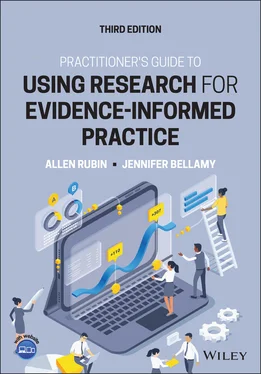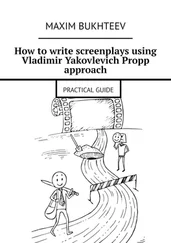1 ...6 7 8 10 11 12 ...27
1.4 EIP Practice Regarding Policy and Social Justice
Although much of the literature on EIP focuses on effectiveness questions and on the clinical level of practice, EIP also pertains to decisions made at other levels of practice, including decisions about community interventions and social policies.
1.5 EIP and Black Lives Matter
Regarding social justice, for example, in the aftermath of the murder of George Floyd and various other incidents of Black people being killed by police in 2020, policy questions arose in connection to the Black Lives Matter (BLM) movement and the prevention of future such incidents. At one extreme of the policy debate were those calling for defunding or abolishing police. Less extreme voices expressed fears that those extreme positions had no chance of being adopted and that those advocating such policies risked creating a backlash against the BLM movement and perhaps increasing the chances that Donald Trump would be reelected. Instead of abolishing the police, therefore, they advocated developing policies that would reform the police and policy-level interventions that would prevent or dramatically reduce future incidents of racist police brutality.
Taking an evidence-informed approach toward discovering such policies and interventions that would have the best chance of being effective, you might enter terms like Black Lives Matter , police violence , or similar terms in a search engine like Google. If you do, you might come up with a list of links such as the following:
Campaign zero.
Research shows there are at least six proven ways to reduce police brutality – and two strategies that don't work, A. Woodward & M. Mark, businessinsider.com.
Lum, C. et al. (2019). Research on body-worn cameras. Criminology & Public Policy, 18, 93–118.
At the Campaign Zero link, you might read the following quote from former President Barrack Obama:
We have more information and more data as to what works, and there are organizations like Campaign Zero, Color of Change and others that are out there, highlighting what the data show what works and what doesn't in terms of reducing incidents of police misconduct and violence. Let's go ahead and start implementing those.
Thus, President Obama took an evidence-informed approach and considered research findings when formulating his position on this issue. If you do not take such an EIP approach, you might recommend policies or interventions that the research that he cited showed to be ineffective or insufficient, such as relying solely on requiring police to wear body cameras or engaging them in interventions to reduce implicit bias.
Another example of EIP at the policy level pertains to the impact of managed care – a term referring to various approaches that try to control the costs of health care. The main idea is for a large organization (such as a health insurance company or a health maintenance organization) to contract with service providers who agree to provide health care at reduced costs. Health care providers are willing to meet the reduced cost demands so that more clients covered under the managed care plan will use their services.
Managed care companies also attempt to reduce costs by agreeing to pay only for the type and amount of services that they consider necessary and effective. Consequently, health care providers may feel pressured to provide briefer and less costly forms of treatment. Trujillo (2004, p. 116), for example, reviewed research on the question: “Do for-profit health plans restrict access to high-cost procedures?” The study found no evidence to indicate that patients covered by for-profit managed care plans are less likely to be treated with high-cost procedures than patients covered by nonprofit managed care plans. An excellent book on EIP and managed care, by Muir Gray (2001), is Evidence-Based Healthcare: How to Make Health Policy and Management Decisions .
A final example of EIP at the level of policy pertains to concerns about social justice for the LGBTQ (lesbian, gay, bisexual, and transgender, and queer) population. Taking an EIP approach to that issue, you might enter a term like LGBTQ POLICY RESEARCH on your search engine. If you do, you might come up with a list of links such as the following:
LGBT Policy Research - LGBTQ/Gender & Sexuality Studies … https://libguides.gc.cuny.edu› c.php
Public Policy Institute Uses Research to Advocate for LGBTQ … www.insightintodiversity.com› public-policy-in … .
LGBTQ Youth | American Institutes for Research www.air.org› topic › health › lgbtq-youth.
At the latter site you could find a review of research on the effectiveness of mentoring in improving the well-being of LGBTQ youth. That review identifies what kinds of mentoring support are most associated with desirable outcomes. You could also read about another study about the effectiveness of violence prevention programs targeted at urban LGBTQ youth.
1.6 Developing an EIP Practice Process Outlook
Becoming an evidence-informed practitioner does not begin just by implementing the phases of the EIP process, phases that we examine more thoroughly in Chapter 2. To implement the process successfully, practitioners might have to change the way they have been influenced to think about practice knowledge. For example, relatively inexperienced practitioners might work in settings where more experienced practitioners and supervisors generally do not value research evidence to inform practice decisions or are not well trained in EIP. In their own practice, as well as in their influences on newer practitioners, older and more experienced practitioners may resist notions that they should be influenced by such evidence to change the way they intervene (Sanderson, 2002). These practitioners – including many who provide practicum training in professional education – may have been trained and feel proficient in only a small number of treatment approaches – approaches that may not be supported by the best evidence. Not only might they be dogmatically wedded to those approaches, research evidence might have little credibility in influencing them to reconsider what they do. Instead, they might be much more predisposed to value the testimonials of esteemed practitioner colleagues or luminaries renowned for their practice expertise (Bilsker & Goldner, 2004; Chwalisz, 2003; Dulcan, 2005; Lwin & Beltrano, 2020; Sanderson, 2002).
Some practitioners may feel uncomfortable with EIP because of its emphasis on evaluation, the need for continuous development of new proficiency in skills in practice, and continuous reevaluation of current practices. Experienced practitioners may feel threatened or defensive about the “unproven” practices that they currently use, or feel that they already know how to provide services expertly and do not want to consider other options. Trainees may feel uncertain, anxious, or even embarrassed about their lack of skills in delivering new interventions and feel uncomfortable questioning the practices of senior colleagues. It's important to acknowledge and address these attitudes and fears – as they pose real barriers to the EIP process. Adopting an EIP outlook means fostering your comfort with self-critique and an openness to questioning and changing practices.
Gambrill (1999), for example, contrasts EIP with authority-informed practice . Rather than rely on testimonials from esteemed practitioner authorities, EIP requires critical thinking . Doing so means being vigilant in trying to recognize testimonials and traditions that are based on unfounded beliefs and assumptions – no matter how prestigious the source of such testimonials and no matter how long the traditions have been in vogue in a practice setting. Although it is advisable for practitioners – especially inexperienced ones – to respect the “practice wisdom” of their superiors, if they are critical thinkers engaged in EIP, they will not just blindly accept and blindly conform to what esteemed others tell them about practice and how to intervene – solely on the basis of authority or tradition.
Читать дальше












